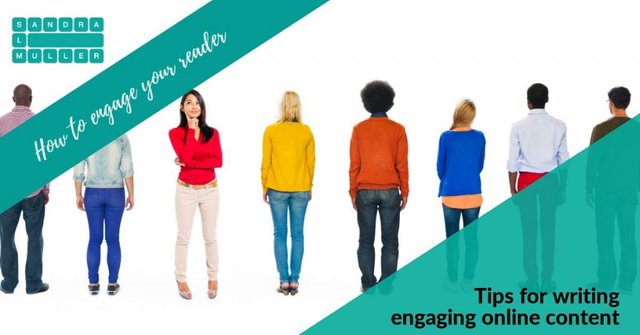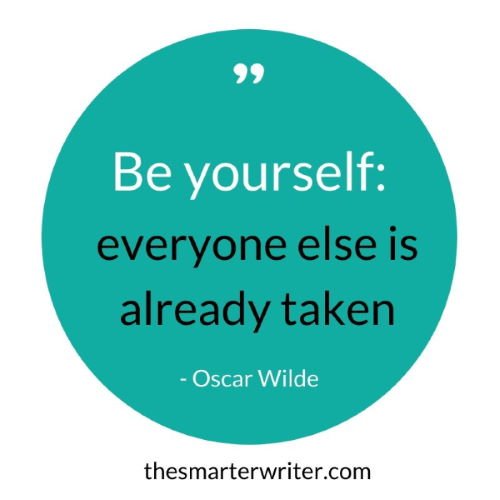
What is engaging content?
Engaging content satisfies a reader's goal in a delightful way.
Engaging content lures the reader through the promise of delivering what they want or need to know, or by making them feel what they want or expect to feel.
For example, a reader's goal could be:
- entertain me for 2 minutes while I'm waiting for the bus
- help me figure out how to set up my microphone on this computer
- let me revel in my outrage and amplify my feelings about boys singing sexist chants on a tram
- give me some ideas for what to cook on meat-free Monday
- tell me when the school holidays are next year
- explain to me again why the makers of The Walking Dead have persisted with Season 10 🧟
A content lure comes in many forms. It could come from:
- an attractive headline that inspires the reader to click on it
- a well-crafted and optimised meta description in a search results page
- a teaser posted on social media that draws the reader in
- a pin on Pinterest that promises to solve the reader's problem
The lure can come in many forms but for it to be engaging, it has to drive readers, preferably your target audience, to your content.
Think about your own behaviour when it comes to choosing what to read. What drives you to click on something and read it? Be aware of your behaviour next time you're drawn to click a link to content. Note why you deemed that particular piece of content click-worthy. Can you employ the same kind of tactic with your own content?
For the content beyond the headline or teaser to be engaging, it must deliver what it promised. If your content moves your reader towards their goal, you will hook them into reading further because they either want to or need to know or feel more.
How to create engaging content

Pin it to read later
There is no one-size-fits-all approach to creating engaging content.
From the few examples I included above, content is crafted for different reasons and to meet different reader goals. But the one thing engaging content has that other content doesn't - it delivers on its promise to the user.
If you tell people you're going to give them 7 tips for creating engaging content, then you'd better deliver 7 tips for creating engaging content. Not 4 tips. Not a make-up tutorial. Not a tenth season of The Walking Dead.
But there's more to it than just delivering your promise, right?
There's that almost ethereal quality that some writers have that you can't quite put your finger on. Maybe it's their tone of voice way of expressing something where you find yourself nodding along and feeling like they're eerily connected to your deep dark thoughts so you feel less alone. Maybe it's the way they inject humour into their writing so you feel informed and amused at the same time. Maybe it's the way they can explain a complex concept in simple terms that makes you clap your hands in sweet blessed relief.

Think of content as a present.
Let's say you're giving a zombie fan a humorous guide to surviving the zombie apocalypse. Imagine giving the present to the zombie fan by simply handing them the book and wishing them a happy birthday.
Next imagine giving the same book wrapped in wrapping paper that has little green zombies on it, dressed with matching green ribbon, and a zombie card. And after they open the present and their face lights up and your other bestie sneaks up behind them in a zombie costume to give them a fright. And then in the card is a voucher to attend a zombie survival weekend on a farm just outside the city with other zombie enthusiasts.
You've dropped clues in the presentation of your gift as to what it might be. The receiver recognises in an instant that you know of their love for zombies. There's that connection. The zombie wrapping paper and card hints to what the theme of the gift might be and their excitement builds.
That promise of a zombie-related gift, first suggested by the little green zombies on the wrapping paper, is delivered. Perhaps over-delivered with the ticket to a zombie survivalist weekend.
Imagine if the gift instead had been a book on oral hygiene and voucher for a teeth cleaning at the dentist?
Content can be a lot like that. Lures can be deceiving and a promise not delivered.
Rather than pushing people with 'Here, read my AWESOME stuff', a cheeky headline and an intriguing teaser that connects with what the reader is thinking can lure them in.
Then your thoughtful, considered and clearly written content mimics the delight of unwrapping the zombie-related gift, not the dismay of having your oral hygiene called into question.
Your in-depth analysis satisfies. That scary tap on the shoulder gives a brief shock but then your words make the reader feel safe again.
For a reader to connect with you through your words and engage with your content at that deeper level, that reader needs to relate not only to what you write but how you write it.
I'm not promising all the answers here, but here are some tips to help you consider if you're luring readers with a promise and then delivering on that promise in an engaging way that connects with your reader.
1. Know your platform
Where you're publishing your content influences how you write your content. Or it should.
I don't post the same irreverent stuff I post on my Facebook page that I do on LinkedIn. I post content on LinkedIn that will help potential leads see me as a content and plain English authority. On Instagram, I share the visual aspects of my life an expat in Korea. But I wouldn't share those images on LinkedIn either.
I'm not saying that you can't do that. But consider the purpose of the platform and your goal for publishing content on it. If it all aligns, great! Go for it. But if it doesn't, don't be lazy. You can be smarter than that.
I have a whole other website for my consulting services. I started this blog as a safe place where I could be a lot more personal and write about a wide range of topics, not just those directly relating to my service offering.
While I keep my voice consistent across platforms, I usually don't publish the same content on all platforms. Sometimes I get lazy and post the same thing. But more often than not I tweak it to suit or post completely different content on different platforms. It's more work, but I feel like I'm crafting different aspects of my persona to appeal to readers who are on different platforms for different purposes.
Knowing what to publish where is key to connecting with your readers through engaging content.
2. Know what your readers want to know, think or feel

You don't need a fortune teller to know what your readers want to know, think or feel.
There are lots of ways to find out.
Keyword research has the double benefit of uncovering the things people are searching for and the keywords that will drive traffic to your content.
Visiting a site like the now-no-longer-100%-free Answer the public or the completely free Quora offers plenty of gems.
Stalking Watching people you admire online and how they engage with their audience can inspire some ideas. But don't mimic what they do. What works for them works because of them. You're a different critter and will attract and repel different people for different reasons.
I'm not going to tell you how to suck eggs some more - you know this stuff. But keep it in mind when you're writing so you write in a way that will resonate with your audience and achieve your content goals.
3. Write like you speak
Well, not exactly. If you're anything like me, your speech won't be one-tenth as eloquent as your words. There are ummms and ahhhs, broken thoughts and jumping from one idea before I finish articulating the first.
Did someone mention zombies? 🧟🤔
When you chat with someone, your language is far less formal than when you write. Usually.
It took me a long time to unshackle myself from the strict rules I was taught in high school and at uni for writing essays and presenting an argument.
Old school rules drummed into me like writing in the passive voice, not starting sentences with 'and' or 'but' and removing all trace of personality.
Take those rules and stuff them in the bin.
Ditch the formality of academic writing, if that's what's holding your writing back. Instead, try writing something like you're writing a letter to a friend. When I think about doing this, straightaway the rigidity of academic writing dissipates.
Or try dictating your thoughts to an app like Otter.ai instead of writing with a pen or typing on a keyboard and see if that makes your content more chatty and less stuffy.
4. Put more of yourself into your content
One of the easiest ways to sound more casual and chatty in your writing and cut that academic formality crap out is to use the first person point of view.
This means using the 'I' pronoun rather than your name when referring to yourself or to own your statements. For example:
✔️ I love zombie movies.
❌ Sandra loves Zombie movies.
It means owning your ideas. It means people are listening to what you have to say. And that can be a bit scary. But you're lovely and loveable and warm and clever, right?
By letting your personality shine through and especially by writing from the first person point of view and without academic stuffiness, your content will be far more engaging.
Writing about yourself and putting yourself out there can be really hard. Take a look at your 'About' page or your LinkedIn profile. Do you write about yourself using your name or the I pronoun?
Is it:
✔️ I'm a content strategist and plain English advocate.
❌ Sandra is a content strategist and plain English advocate.
A simple switch from third to first person point of view can make a big difference in how engaging your content is.
Side note: should I use 'we' or 'I'?
This is another question to consider when writing about yourself in the first person.
If you're the only person working in your business, use I.
Don't try to make your business sound like it's bigger than it is by using 'we'. It's not authentic and people can usually sniff that out pretty quickly.
But if you have a team of people you regularly outsource or subcontract for projects, then using 'we' is completely fine.
5. Be you

Ah, clever Oscar Wilde.
Once on a holiday to the Gold Coast in my late teens, I pretended to be Sandy from Canada. I had to maintain a faux Canadian accent, pretend to be annoyed if people asked me if I was from the US and memorise geographic details of Toronto (pronounced something like 'Trahnno', apparently). I even considered sewing a maple leaf on my backpack.
I don't know why I did it. It was exhausting. I was hanging out with an acting student and she had the part mastered. I think she roped me into it and pretended to be my sister. And sure, Sandy from Canada got backstage passes to a Wailers concert... but still... exhausting!
I guess what I'm saying here is: don't be Sandy from Canada.
The benefits might be alluring but they'll be short-lived. It's hard to maintain an inauthentic persona. Sandy from Canada was too shy to approach the Wailers anyway.
Be you.
You are glorious.
Be memorable.
You can't be memorable by being academic in the way you phrase your words and structure your sentences.
People love stories. We thrive on them. There's no better way to connect with your readers than weaving a personal story into your writing.
Share your stories, your experiences, your life. This makes you all the more relatable and your content more engaging.
Sharing vs over-sharing
But, be warned.
There's a line.
If I told you about the morning I woke up on this same trip, cuddled up to a bicycle on someone's loungeroom floor with no idea where I was or how I got there, that might be bordering on oversharing.
So I won't go there. No wait, I kinda already did. 🙄 But I did it to illustrate a point!
The overshare line is purely subjective. What one person thinks is oversharing, another person thinks of it as a display of vulnerability that they can relate and connect to. Perhaps you once woke cuddled up to a bicycle, too, and totally relate? 🚴♀️❤️
You only get to draw that line from your perspective. You can't tell your readers if what you've shared hasn't crossed the line. Only they can determine that for themselves.
Some people like Constance Hall build an empire out of vulnerable oversharing.
I drew that line, subjectively, of course.
Know where your line is and how much of yourself you're prepared to put out there. A little discomfort is OK. A full-on warts-and-all exposé is not for me.
6. It's all about the headline
Back to something less ethereal and more qualitative.
Sadly, if you don't have the right headline, you won't attract readers.
I'm a bit rubbish at writing headlines, to be honest. Mine often have significant personal meaning but mean nothing special to anyone else. Or they teeter on the edge of clickbait. Or they're too SEOified and stilted. I need to find the right balance between intrigue and practicality.
Check out Coschedule's Headline Analyser tool. (You can have to sign up to get access, but it's fun to play with your headline to make it more engaging).
I got the score for this post's headline up from 47 to 58 but I couldn't get the score over 58/100. Sigh.
Headlines are your biggest opportunity to lure people to your content.
They're your wrapping paper with little green zombies on it.
I write at least 10 headlines before I settle on (a mediocre) one.
I vow to work on this,
7. Engage your reader with the right call to action

Reading is such a passive activity.
Until it isn't.
Ask your reader questions. Ask them to do something.
People love talking about themselves. I could share more Sandy from Canada stories, but I won't. Because brevity. And because this post is about how you are going to try different ways of writing more engaging content. Not the antics of a 19-year-old phoney living it up on the Goldie.
I watch some people on social media who don't have a huge following but have enormous engagement. The posts that engage people the most are always the ones where the writer has shared a bit of a story about themselves and asked their readers to share something or answer a question - sometimes a polarising one.
Aside from writing engaging content, what are you doing to connect with your readers?
Let me know in the comments below.
Or tell me about that time you woke up cuddling a bike.
Posted from my blog.
Congratulations @sandramuller! You received a personal award!
You can view your badges on your Steem Board and compare to others on the Steem Ranking
Do not miss the last post from @steemitboard:
Vote for @Steemitboard as a witness to get one more award and increased upvotes!
Downvoting a post can decrease pending rewards and make it less visible. Common reasons:
Submit